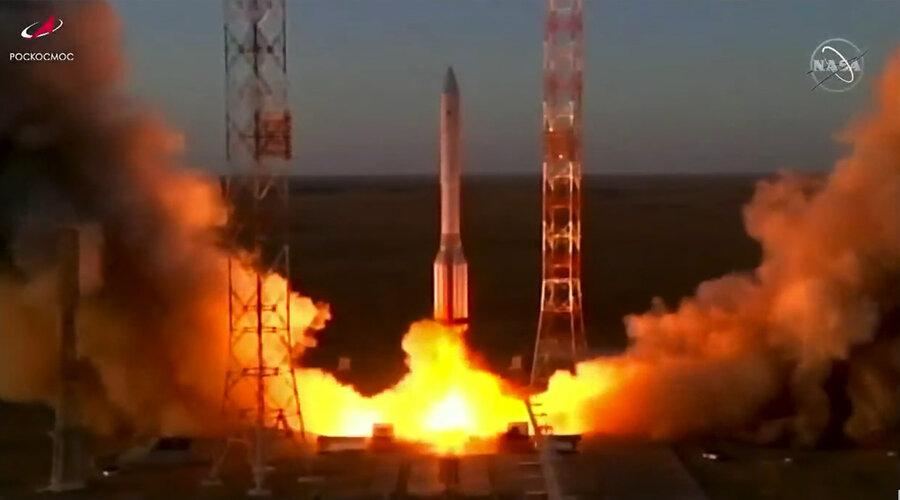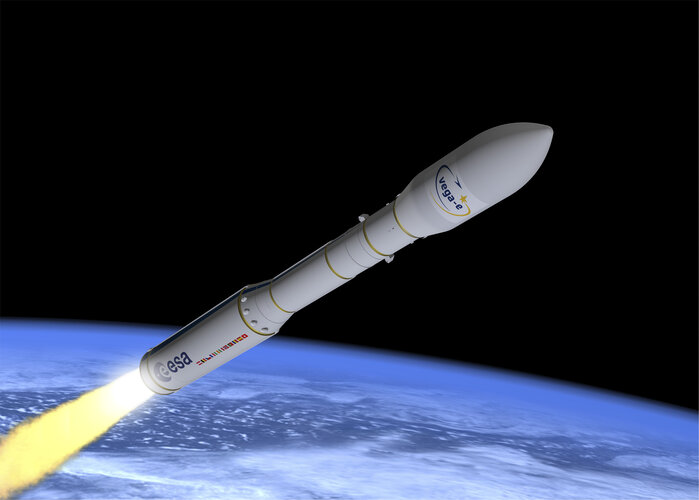
Copernical Team
View from Juno during its flyby of Ganymede and Jupiter

Visualizations shape how we perceive space exploration. Whether it's the Pale Blue Dot, the Hubble Ultra Deep Field, Earthrise, or any other myriad images captured as part of this great endeavor, they all help inspire the next generation of explorers. Now, with advances in image capture and processing technology, we can finally start to take the next step in those visualizations—video. Ingenuity was recently captured on video during its first flight a few months ago. And this week, NASA released a breathtaking video of Juno's view of Jupiter and Ganymede, one of its moons, as it flew past the gas giant.
The views themselves are stunning, with lightning flashing on Jupiter's night side and Ganymede's textured terrain coming across in full force.
Astrophysicist outlines plans for a gravitational wave observatory on the moon

Vanderbilt astrophysicist Karan Jani has led a series of studies that make the first case for a gravitational wave infrastructure on the surface of the moon. The experiment, dubbed Gravitational-Wave Lunar Observatory for Cosmology, uses the moon's environment and geocentric orbit to analyze mergers of black holes, neuron stars and dark matter candidates within almost 70 percent of the entire observable volume of the universe, he said.
"By tapping into the natural conditions on the moon, we showed that one of the most challenging spectrum of gravitational waves can be measured better from the lunar surface, which so far seems impossible from Earth or space," Jani said.
"The moon offers an ideal backdrop for the ultimate gravitational wave observatory, since it lacks an atmosphere and noticeable seismic noise, which we must mitigate at great cost for laser interferometers on Earth," said Avi Loeb, professor of science at Harvard University and bestselling author of books about black holes, the first stars, the search for extraterrestrial life and the future of the universe.
Space-based infrared imaging reveals the nighttime weather on Venus

Little is known about Venus weather at night, as the absence of sunlight makes imaging difficult. Now, researchers have devised a way to use infrared sensors on board the Venus orbiter Akatsuki to reveal the first details of the nighttime weather of our nearest neighbor. Their analytical methods could be used to study other planets including Mars and gas giants as well. Furthermore, the study of Venusian weather granted by their methods could allow researchers to learn more about the mechanisms underpinning Earth's weather systems.
European Robotic Arm is launched into space

The European Robotic Arm (ERA) is on its way to the International Space Station after being launched on a Proton rocket from the Baikonur Cosmodrome, in Kazakhstan, at 16:58 CEST today.
ESA advances Vega rocket evolution beyond 2025

ESA will further increase the competitiveness and environmental sustainability of Europe’s Vega launch system beyond 2025 through a contract signed with Avio in Italy.
Cool flames created during a first for ISS research
 Cool flames, flames that burn at extremely low temperatures, are nearly impossible to create in Earth's gravity. However, they are easily produced in the microgravity environment of the International Space Station.
Non-premixed cool flames, created when fuel and oxidizer are not mixed before reacting, were discovered in 2012 aboard the space station during the Flame Extinguishment (FLEX) s
Cool flames, flames that burn at extremely low temperatures, are nearly impossible to create in Earth's gravity. However, they are easily produced in the microgravity environment of the International Space Station.
Non-premixed cool flames, created when fuel and oxidizer are not mixed before reacting, were discovered in 2012 aboard the space station during the Flame Extinguishment (FLEX) s AFRL conducts 1,300 experiments on record-breaking satellite
 The Air Force Research Laboratory is celebrating the completion of the Demonstration and Science Experiments (DSX) satellite mission, and processing a treasure trove of valuable data that will be studied by scientists for many years to come.
The spacecraft was launched June 25, 2019 from Cape Canaveral Space Force Station after 16 years of development, integration, and testing.
"Most
The Air Force Research Laboratory is celebrating the completion of the Demonstration and Science Experiments (DSX) satellite mission, and processing a treasure trove of valuable data that will be studied by scientists for many years to come.
The spacecraft was launched June 25, 2019 from Cape Canaveral Space Force Station after 16 years of development, integration, and testing.
"Most Roscosmos says US greenlit import of Russia's RD-181M rocket engines
 The United States has approved the purchase of a new batch of the Russian-made RD-181M space rocket engines, a spokesman for the Russian space agency Roscosmos, Vladimir Ustimenko, said on Tuesday.
"The US government has approved the contract between NPO Energomash [Roscosmos subsidiary] and US Orbital Sciences LLC company. This means that there will be new supplies of engines and new laun
The United States has approved the purchase of a new batch of the Russian-made RD-181M space rocket engines, a spokesman for the Russian space agency Roscosmos, Vladimir Ustimenko, said on Tuesday.
"The US government has approved the contract between NPO Energomash [Roscosmos subsidiary] and US Orbital Sciences LLC company. This means that there will be new supplies of engines and new laun Perseverance rover begins hunt for signs of Martian life
 NASA's Mars 2020 Perseverance rover has begun its search for signs of ancient life on the Red Planet. Flexing its 7-foot (2-meter) mechanical arm, the rover is testing the sensitive detectors it carries, capturing their first science readings. Along with analyzing rocks using X-rays and ultraviolet light, the six-wheeled scientist will zoom in for closeups of tiny segments of rock surfaces that
NASA's Mars 2020 Perseverance rover has begun its search for signs of ancient life on the Red Planet. Flexing its 7-foot (2-meter) mechanical arm, the rover is testing the sensitive detectors it carries, capturing their first science readings. Along with analyzing rocks using X-rays and ultraviolet light, the six-wheeled scientist will zoom in for closeups of tiny segments of rock surfaces that SuperBIT: A low-cost, balloon-borne telescope to rival Hubble

Durham, Toronto and Princeton Universities have teamed up with NASA and the Canadian Space Agency to build a new kind of astronomical telescope. SuperBIT flies above 99.5% of the Earth's atmosphere, carried by a helium balloon the size of a football stadium. The telescope will make its operational debut next April and when deployed should obtain high-resolution images rivaling those of the Hubble Space Telescope. Mohamed Shaaban, a Ph.D. student at the University of Toronto, will describe SuperBIT in his talk today (Wednesday 21 July) at the online RAS National Astronomy Meeting (NAM 2021).
Light from a distant galaxy can travel for billions of years to reach our telescopes. In the final fraction of a second, the light has to pass through the Earth's swirling, turbulent atmosphere. Our view of the universe becomes blurred.
